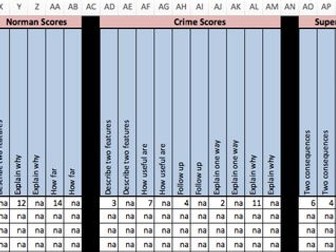
King John & Magna Carta
Designed as part of the KS3 SOW in which students examine the change of power of time. Aimed at the slightly more able, students are encouraged to investigate the sources and critically evaluate the provenance of each in order to make a judgement not only of John, but also on how we approach sources.
All instructions are on the slides, clip embedded for starter and all resources ready to print in white at the end of the PPT.


